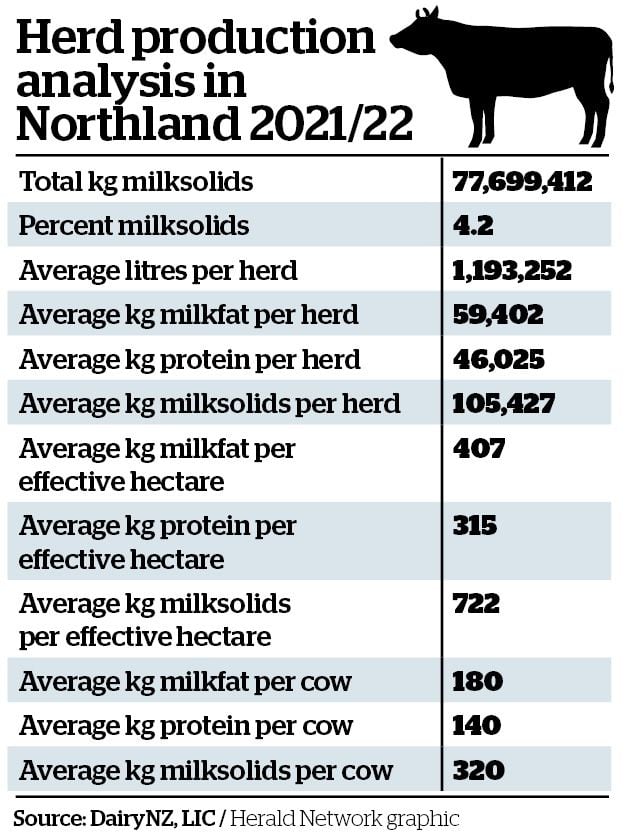AgFirst farm consultant Tafi Manjala says the days of peak cows in Northland are gone.
Photo / Tania Whyte
A warning that the days of peak cows and milk production in Northland are over has been issued as a combination of factors, including regulatory requirements, are putting a strain on the dairy sector.
The
warning from AgFirst farm consultant Tafi Manjala and Federated Farmers in Northland follows the New Zealand Dairy Statistics report released by DairyNZ and the Livestock Improvement Corporation (LIC) that shows the number of cows and the amount of milk solids produced in Northland are declining. It mirrors the trend nationally.
Cow numbers in Northland decreased nearly 6 per cent, from 258,292 in the 2019/20 season to 243,014 the following year.
The amount of milk solids produced in the region was down from 80.9 million kilograms of milk solids to 77.6 million kg/MS over the same period.
The report authors said after reaching a record milk production per herd and per cow in the previous 2020/21 season, production dropped back to 2019/20 levels throughout New Zealand as the impacts of Covid-19, climatic conditions on farms, inflationary pressures and supply chain issues presented a challenging year for the industry.
Nationally, declining cow and herd numbers resulted in a 4.3 per cent decrease in the amount of milk produced and a 4.1 per cent drop in the kg/MS processed.


Despite a challenging 2021/22 season, DairyNZ and the LIC said the statistics showed an innovative dairy sector responding well during a changeable time.
But Manjala said there would come a time when a cap could be placed on the number of stock people could carry, based on land use capability.
Advertisement
“With milk production going down due to a range of factors such as greenhouse gas and the rising cost of production, it will have an impact on communities. Everybody knows that the days of peak cow numbers are gone,” he said.
“There’s a correlation between the amount of methane produced versus the level of stock in terms of greenhouse gases, and for farmers, it’s about producing the same amount of milk more efficiently despite a drop in the number of cows.”
Sediment loss could be a factor in a drop in the number of cows, he said, as farming was not suitable on certain land.
“There’s also a generation of farmers that are leaving the industry, some because there’s no successor to continue on the legacy, for others it’s about compliance. There will be fewer mum and dad farmers going forward,” Manjala said.
The average per kg of milk solids per cow in Northland was 320. Kaipara led the stats in Northland in terms of the number of cows (91,161), total herds (281), and the number of owner/operators (191).
Northland lags behind Waikato, North Canterbury, Southland, Taranaki, Central Plateau, Otago and South Canterbury in terms of the number of cows.
The smallest average herd sizes are in Northland, Auckland and Taranaki.
The president of Federated Farmers in Northland, Colin Hannah, said no single factor was responsible for a decline in milk production.
Advertisement
Since 2017, he said the number of cows in Northland had dropped 36 per cent.
The unavailability of labour, rising interest rates, Fonterra contracts, experienced farmers moving on, and government regulation – which he described as “idiotic” – have all resulted in a slump in milk production.
Hannah said farmers would have to keep going as Northland’s economy was agri-dependent, whether it was cows, beef or horticulture.
LIC chief executive David Chin said record levels of herd testing uptake and strong investment in artificial breeding demonstrated a continued focus from farmers on herd improvement, to identify poor performing cows and to breed more efficient animals.
The average dairy co-operative payout from Fonterra and Tatua was $9.52 per kg, which was a record average payout for farmers, while dairy exports reached a record $22 billion in 2021/22.



